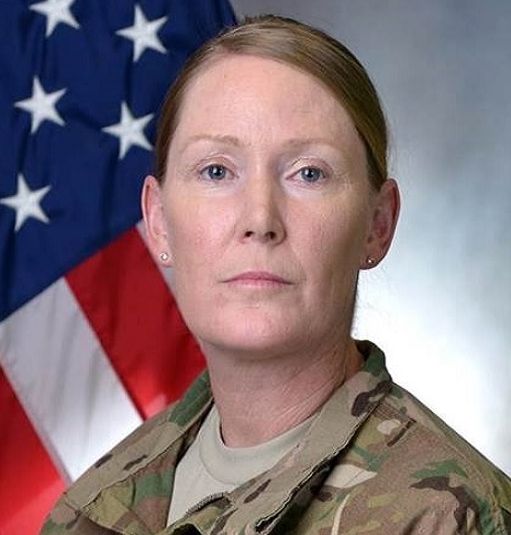
MAKING THE MOST OF THE REPS
CMSgt Tamala L. Hartz
In her last article Brig Gen Tullos talked about getting your training reps in. She linked the concept of getting multiple reps in your personal workout to the importance of getting multiple reps in your professional training regimen. I would like to continue along those same lines and talk about how we can make the most of those reps.
As anyone who has been in a gym or a member of a team knows, how you do your reps is as important as how many reps you do. Is your technique correct, is your form focusing on the correct muscle group, and are you covering your part of the game? If you have ever been discouraged by the results from your workout, chances are the answer to at least one of these questions is “no”. So how do we ensure the answer to all of these questions is “yes” as it relates to your professional training regimen? One way is through leader-led training.
Leader-led training is nothing new. It has been around and a part of the military for decades. The Army and Marine Corp are well versed in its use and it has also been a technique commonly used in some of our specialized units such as the 820th Base Defense Group with great success. Taking it mainstream however has not garnered as much steam as it should. It has been a more common topic of discussion after a training analysis identified a gap in unit on-the-job training. Two primary questions seem to linger at the most grassroots part of our career field, the squadrons. How do we execute leader-led training and how do we accomplish the paradigm shift needed to lock it in as the way we do business in the unit training world?
Leader led training will free our career field from being locked into the traditional classroom instructor led training that seems to follow a shift or completed on a training day. Using the traditional classroom training technique where topics are presented by an instructor from the training section, usually delivered by PowerPoint, for an audience with varying degrees of training and experience is not the most efficient method of training. The twenty-year MSgt
Flight Chief sits alongside the two-year A1C and receives the exact same training in the exact same manner. This training method delivers the topic to the lowest skill-level and is formatted in such a way as to be understood by the most junior, inexperienced person in the room. While the A1C may be deriving some benefit from this technique, chances are anyone with any substantive time or experience in Security Forces is not learning. This is a perfect example of getting inadequate reps. We must make maximum use of your limited time to get the greatest benefit from properly performed reps. This is where leader-led training comes in.
Picture yourself in the same scenario but broken down into fire team and/or squad configurations being training by leaders of your flight addressing your specific training needs and skill level. Now picture the ability of your flight leaders to conduct some of this training on post or during a normal tour of duty. Three benefits become immediately apparent. First, leaders must learn tasks to higher levels of proficiency in order to impart that knowledge on Defenders. He/she become stakeholders in the proficiency of their fellow Defenders and they exercise the leadership roles in line with their rank. Second, subordinates receive training in a realistic environment versus the antiseptic classroom. The training is tailored specifically to the Defenders needs and can be adjusted to push him/her outside their comfort zone and ensure learning is taking place. The training is delivered by the actual leaders who will lead Defenders when they face on-duty situations. Lastly, your time is valued, your proficiency is elevated, and you learn these two things do not always have to be mutually exclusive.
Now you may be asking yourself how the unit training section fits in. It is important to remember that leader-led training is not an end-all, be-all. It is an added training tool and will not be appropriate in some situations. Specialized training requiring federal, state, and local certifications will still need to be conducted by the training section. The primary focus of the trained instructors in the training section will be to implement a leader-led training program. This program teaches the leader-led trainers training methods as well as evaluation techniques. The trainers will also need to audit and facilitate leader-led training by providing training venues, materials, and expertise as needed. The training section instructors will also be responsible for ensuring training is being conducted and documented properly. In short his/her role will primarily be specialization and facilitation.
So how do we make leader-led training the standard instead of the exception? This is a question that has been asked repeatedly over the past few years. Many discussions have taken place on how best to train leaders to be proficient teachers and how to certify them as such to the satisfaction of the career field and the Air Force. We also need to get the word out on leader-led training and begin touting it as our primary training method. These are issues we are working here on the staff. We have made some progress and are beginning to see some leader-led training programs springing up from place-to-place. The recently formed Security Forces Training Working Group is tackling these issues right now.
Leader-led training is our path to posturing ourselves properly, focusing on the correct training muscles, and achieving the full range of training motion that will make our team stronger and more lethal as individual Defenders and a highly capable fighting force.